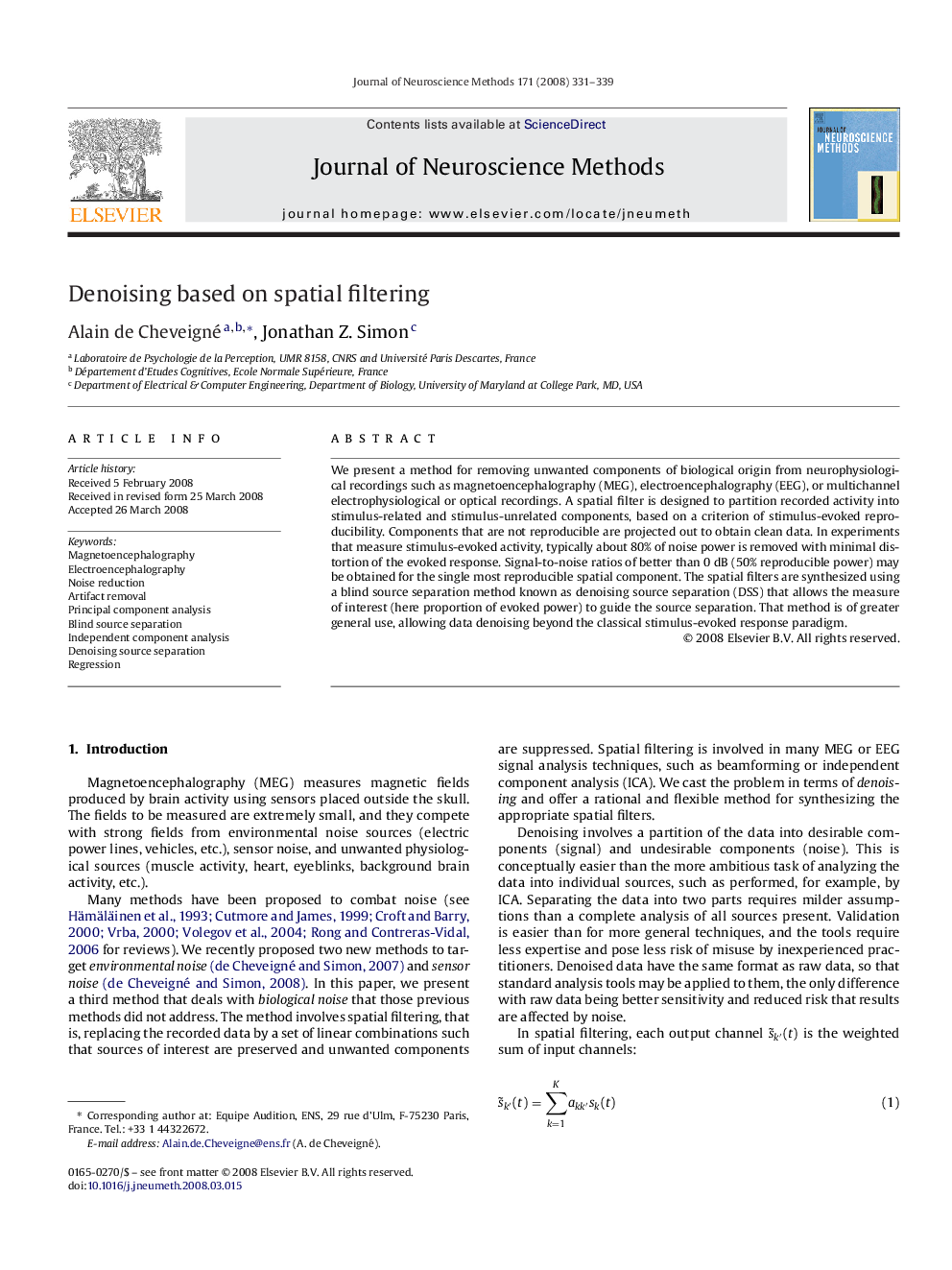| کد مقاله | کد نشریه | سال انتشار | مقاله انگلیسی | نسخه تمام متن |
|---|---|---|---|---|
| 4336305 | 1295206 | 2008 | 9 صفحه PDF | دانلود رایگان |

We present a method for removing unwanted components of biological origin from neurophysiological recordings such as magnetoencephalography (MEG), electroencephalography (EEG), or multichannel electrophysiological or optical recordings. A spatial filter is designed to partition recorded activity into stimulus-related and stimulus-unrelated components, based on a criterion of stimulus-evoked reproducibility. Components that are not reproducible are projected out to obtain clean data. In experiments that measure stimulus-evoked activity, typically about 80% of noise power is removed with minimal distortion of the evoked response. Signal-to-noise ratios of better than 0 dB (50% reproducible power) may be obtained for the single most reproducible spatial component. The spatial filters are synthesized using a blind source separation method known as denoising source separation (DSS) that allows the measure of interest (here proportion of evoked power) to guide the source separation. That method is of greater general use, allowing data denoising beyond the classical stimulus-evoked response paradigm.
Journal: Journal of Neuroscience Methods - Volume 171, Issue 2, 30 June 2008, Pages 331–339